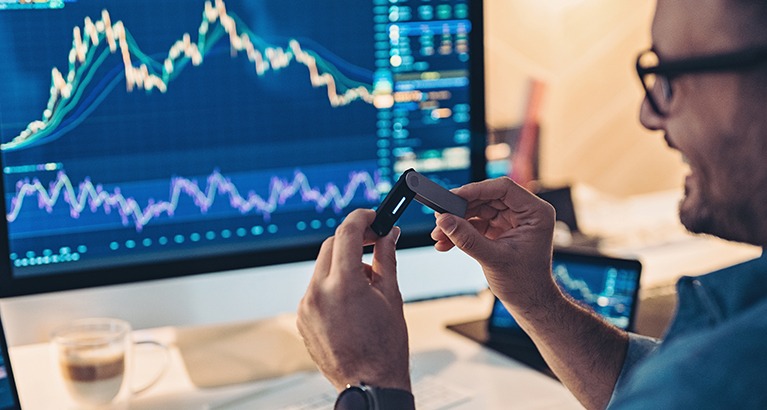An In-Depth Crypto Trading Analysis for Modern Investors

An In-Depth Crypto Trading Analysis for Modern Investors
In the evolving landscape of digital currencies, understanding the nuances of crypto trading analysis is essential for any investor looking to navigate the volatile market effectively.
Crypto Trading Analysis click here to learn more about the tools and strategies that can elevate your trading experience.
From basic principles to advanced techniques, this article aims to provide comprehensive insights into crypto trading analysis.
Understanding the Basics of Crypto Trading
Crypto trading involves buying and selling digital currencies with the objective of making a profit. The market is highly volatile, which means that prices can fluctuate wildly in short periods, presenting both risks and opportunities. At its core, crypto trading can be approached in several ways:
- Day Trading: This involves making numerous trades over the course of a single day to capitalize on small price movements.
- Swing Trading: Traders hold positions for several days or weeks to benefit from expected upward or downward market shifts.
- HODLing: Long-term investors buy and hold cryptocurrencies, regardless of volatility, with faith in the asset’s future value.
The Importance of Market Analysis in Crypto Trading
Effective trading in cryptocurrencies hinges significantly on thorough market analysis. There are two primary types of analysis: Fundamental Analysis (FA) and Technical Analysis (TA).
Fundamental Analysis (FA)
Fundamental analysis evaluates the intrinsic value of a cryptocurrency by assessing various economic factors, including:
- Technology: Understanding the underlying blockchain technology and its use case.
- Market Demand: Analyzing the demand for the cryptocurrency and its potential market penetration.
- Team and Development: Researching the team behind the project and their track record.
- Regulatory Environment: Paying attention to how regulations may affect the cryptocurrency’s viability.
Technical Analysis (TA)
Technical analysis, on the other hand, focuses on price patterns and trading volumes. Utilizing charts and indicators helps traders identify potential future price movements.
Some popular technical analysis tools include:

- Moving Averages: Helps smooth price action and identify trends.
- Relative Strength Index (RSI): A momentum oscillator that measures the speed and change of price movements.
- Bollinger Bands: Useful for determining overbought or oversold conditions in the market.
- Volume Indicators: To confirm the strength of a price movement.
Risk Management Strategies in Crypto Trading
While the potential for profit in crypto trading is significant, so too is the risk. Thus, employing effective risk management strategies is paramount. Here are some methods traders utilize:
- Set Stop-Loss Orders: Automatically sell an asset when it reaches a certain price to limit losses.
- Diversification: Spread investments across various cryptocurrencies to mitigate risk.
- Only Invest What You Can Afford to Lose: A fundamental rule in trading to avoid financial distress.
- Regularly Review and Adjust Your Portfolio: Monitoring the market and adapting your investment strategy to current conditions is essential.
The Role of Sentiment Analysis in Crypto Trading
Beyond fundamental and technical analysis, sentiment analysis is another critical component of crypto trading. Understanding the mood of the market can provide insights into potential price movements. Traders often use social media trends, news coverage, and community reactions to gauge market sentiment.
Tools such as Twitter sentiment analysis and Google Trends can help traders understand overall market emotions, allowing them to make more informed decisions. A positive or negative sentiment can lead to significant price movements, providing traders with opportunities to either capitalize or protect their investments.
Utilizing Trading Bots for Crypto Trading Analysis
With the advancement of technology, many traders are turning to automated trading solutions, such as trading bots. These bots utilize predefined algorithms to analyze the market, execute trades, and can manage your portfolio without constant human intervention.
Benefits of using trading bots include:
- 24/7 Market Monitoring: Bots can analyze the market at any time, ensuring no trading opportunities are missed.
- Emotionless Trading: Bots eliminate psychological factors from trading, allowing for more calculated decisions.
- Backtesting Strategies: Traders can use historical data to see how their strategies would have performed before deploying them in the live market.
The Future of Crypto Trading Analysis
As the cryptocurrency market evolves, so does the complexity and depth of trading analysis. The integration of machine learning and artificial intelligence is expected to play a pivotal role in the future of crypto trading analysis. By analyzing larger datasets and recognizing patterns that might be imperceptible to human traders, these technologies promise to elevate trading strategies to new heights.
Moreover, regulatory changes will continue to reshape the landscape, requiring traders to adapt their analyses and strategies accordingly. Staying updated with these changes and continuously improving trading skills will be essential for anyone looking to thrive in the fast-paced world of cryptocurrency trading.
Conclusion
In conclusion, a detailed crypto trading analysis is not just an academic exercise; it is a vital practice for traders aiming to enhance their profitability while managing risks. By leveraging both fundamental and technical analysis, maintaining rigorous risk management practices, and utilizing innovative tools, traders can position themselves competitively in the thriving cryptocurrency market. The future of trading appears promising, especially for those committed to learning and adapting to the continuously shifting landscape of digital currencies.
